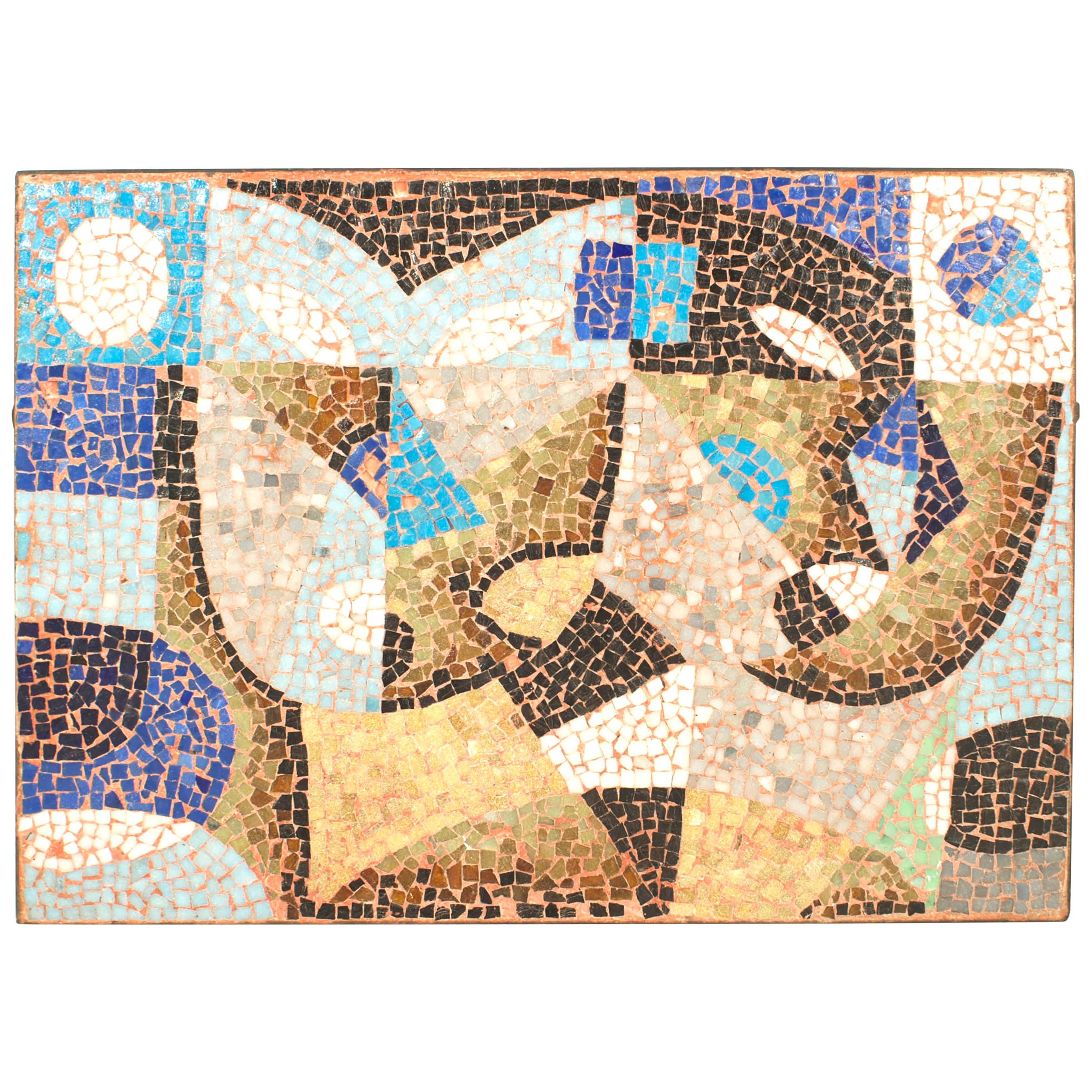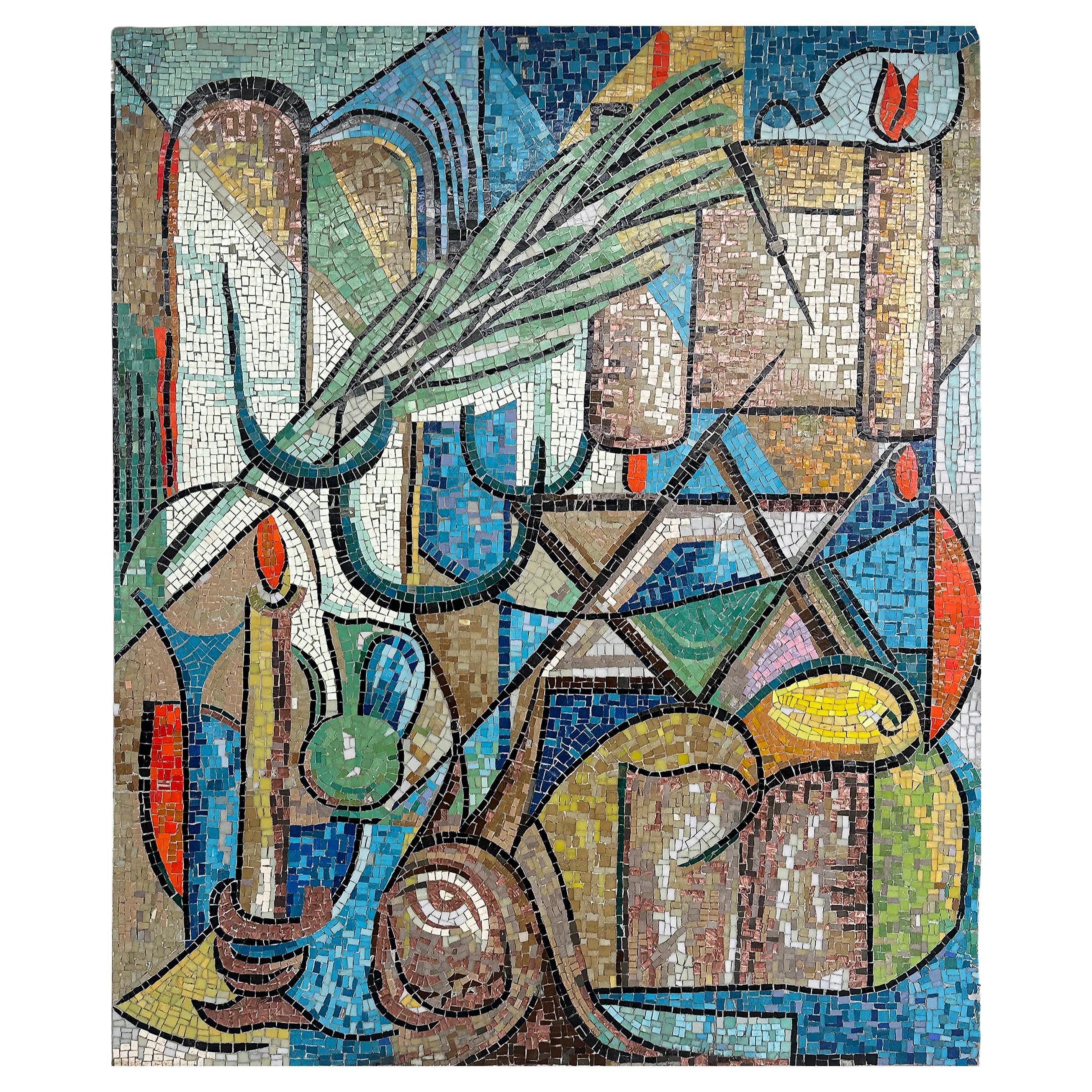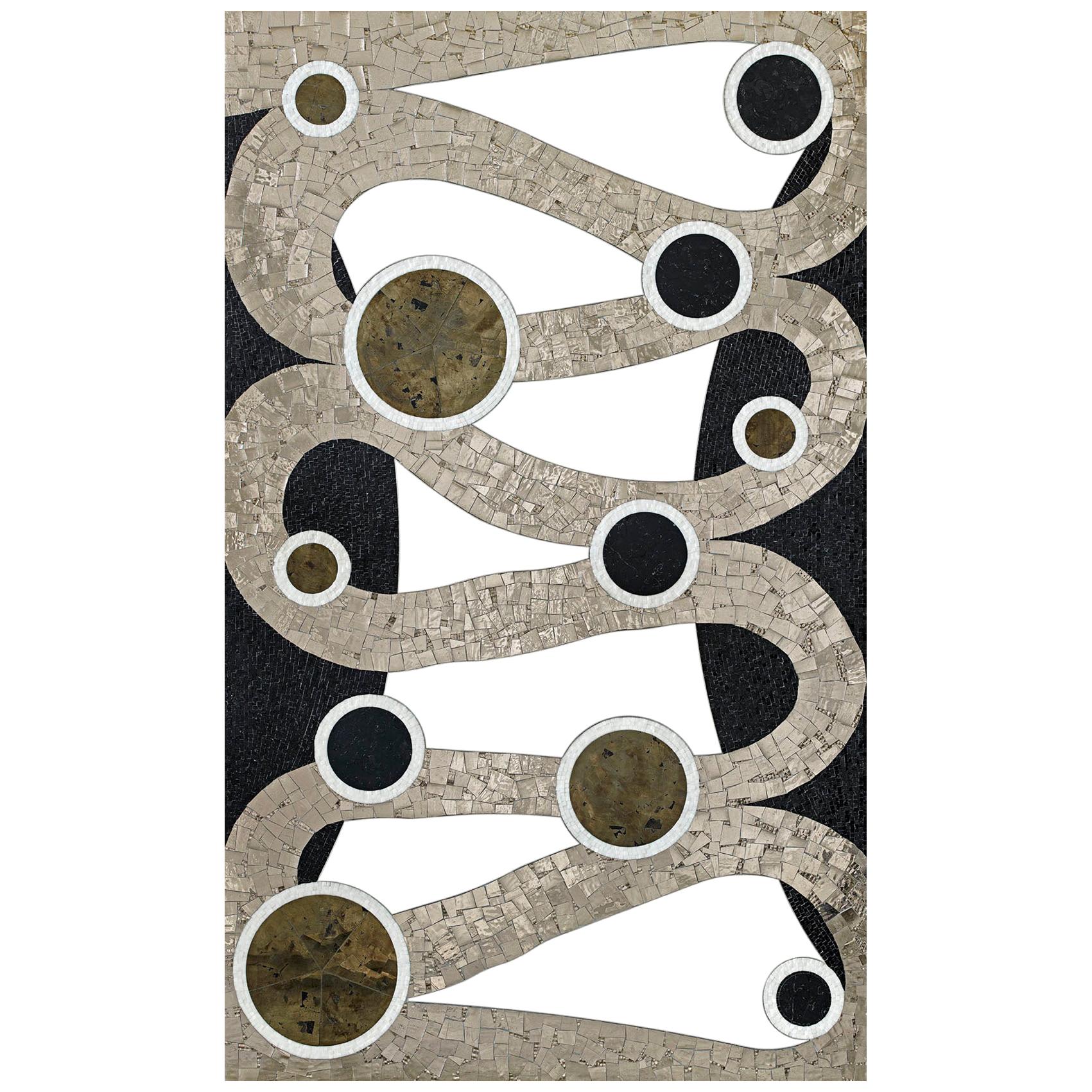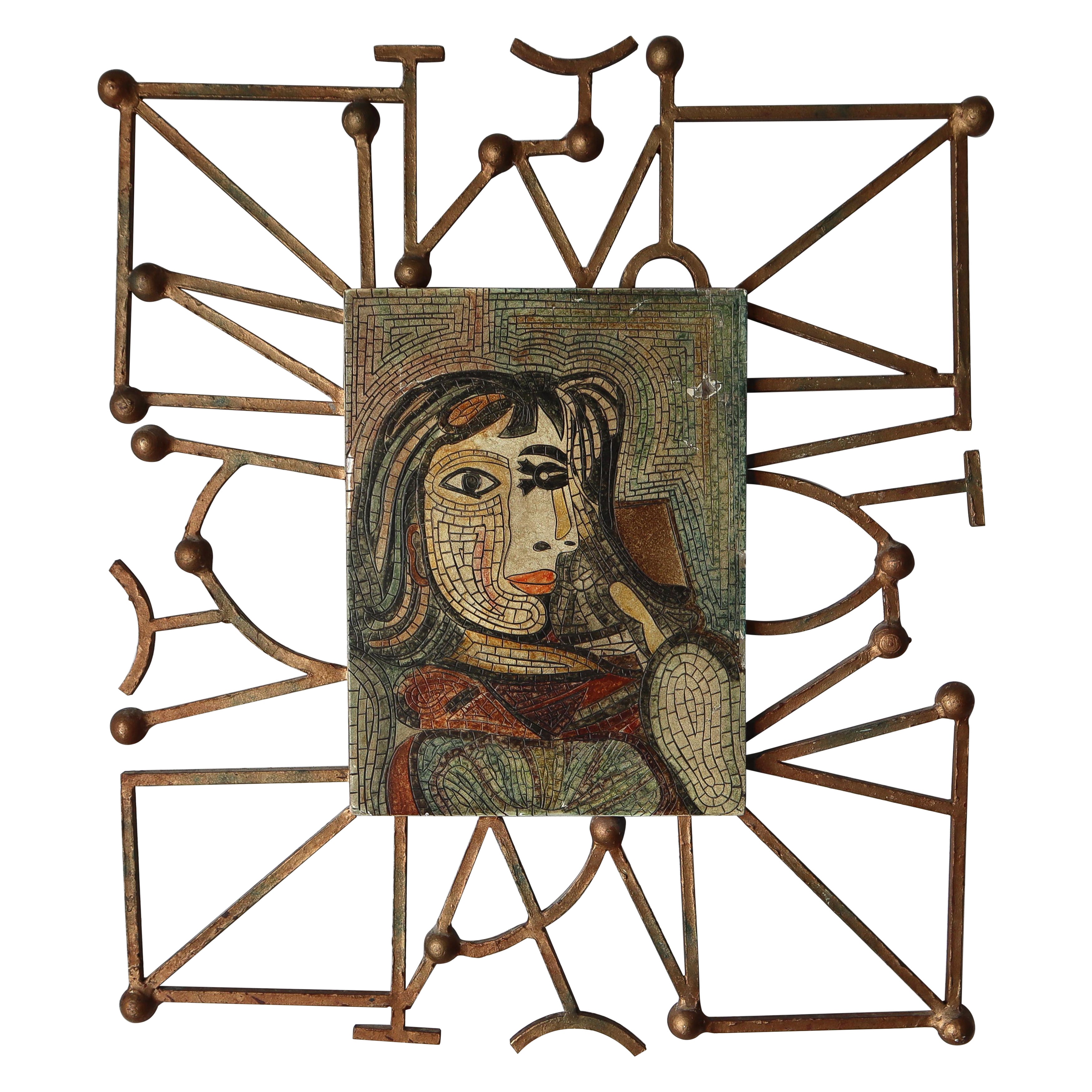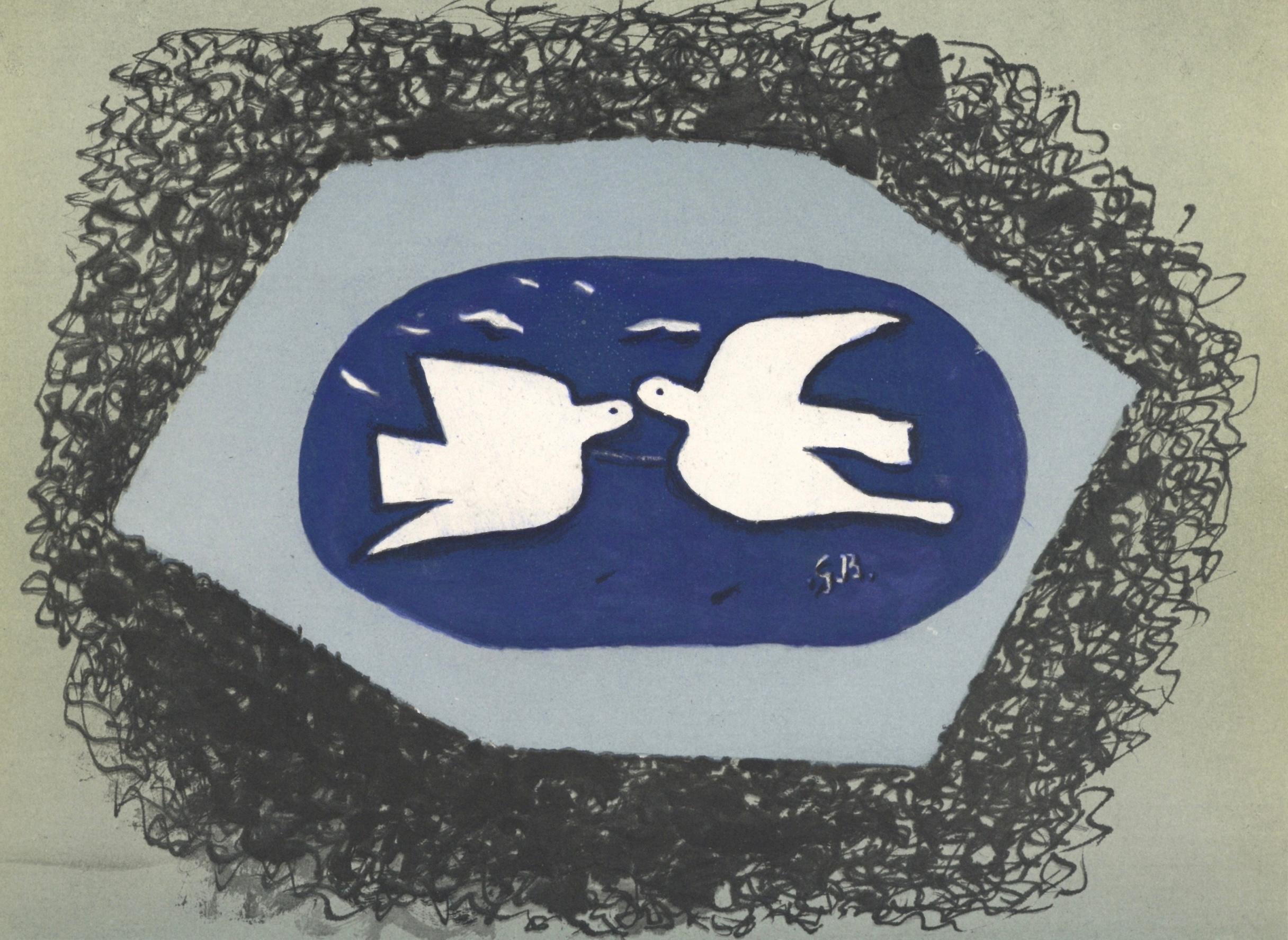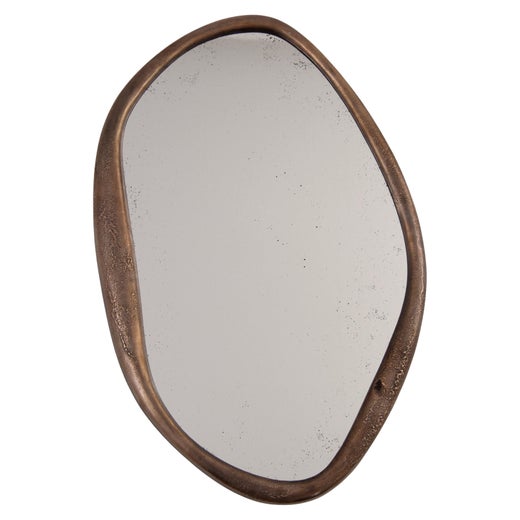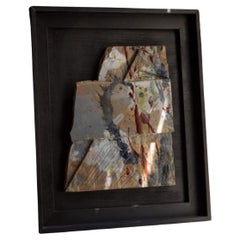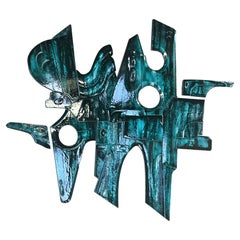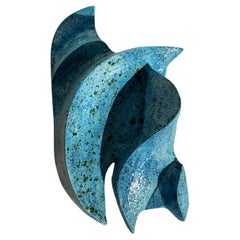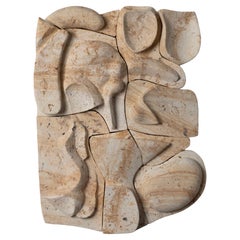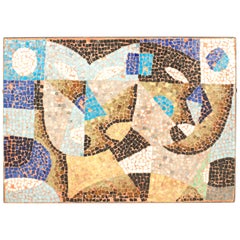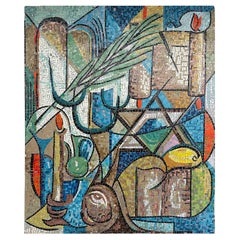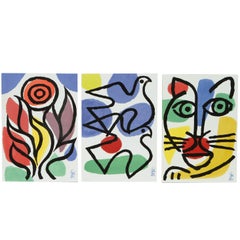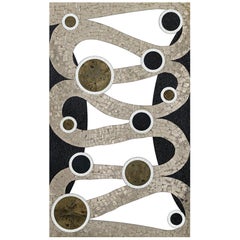Items Similar to After Georges Braque, Mosaïque, "Pelias Et Nelee"
Want more images or videos?
Request additional images or videos from the seller
1 of 6
After Georges Braque, Mosaïque, "Pelias Et Nelee"
$97,469.84per item
£73,059.69per item
€82,500per item
CA$133,906.99per item
A$149,494.56per item
CHF 78,332.90per item
MX$1,829,960.15per item
NOK 994,828.63per item
SEK 937,997.09per item
DKK 628,020.10per item
Quantity
About the Item
Beautiful Mosaic after Georges Braque.
Signed and numbered.
Edition of IV.
Dimensions: 120 x 160 cm.
Mosaic executed by Heidi Melano (one of the most important French Mosaist, she collaborated with Chagall, Braque, Modigliani).
This Mosaic has been exhibited in:
Art Museum of the Imperial Palace, China, 2012.
Nanjing museum, 2012.
Muse´e Georges Braque, Saint-Die´-des-Vosges, 2013.
From the gouache "Pelias et Ne´le´e,' dated 1962.
Bibliography:
"Les Me´tamorphoses de Braque" of Heger de Loewenfeld and Raphae¨l de Cuttoli, Editions FAC, Paris, 1989.
In 1961 Georges Braque decided with his laidary friend Heger de Loewenfeld to pick up certain of his works to in order to create artworks, this beautiful mosaic is one of them.
The father of Cubism.
Three Cubist that distinguishes art historian periods were initiated and developed by Georges Braque: The Cubist Ce´zanne (1907-1909), Executive (1909-1912) and synthetic (1912-1922).
Post-Impressionist and fawn, Braque no longer adheres to the contingency of a decorative way or the other. Ce´zanne’s paintings exhibited at the Grand Palais during the retrospective of 1907 are a Revelation: Ce´zanne sought and invented a pictorial language. In his footsteps, Braque went to the South with the reasons of the Master. He returned with Estaque landscapes and surprising Ciotat it keeps Cezanne geometric model and retains the “passages” continuity from one surface to another to create the sensation of “turning around” of the object represented. But he wants to go after the consequences of the vision of Cezanne. In his paintings Houses in L’Estaque (1908) it simplifies the volumes of houses, neglects detail by removing doors and windows: the plastic rhythm that builds the table. Large nude, a masterpiece of the period, can be considered the first work of Ce´zanne cubism.
Systematizing and deepening Braque discoveries open the door analytical cubism. In 1909, his painting became more cerebral than sensual. The pattern is recreated in the two-dimensionality of the canvas, leaving aside any illusionistic perspective. In still life with violin, objects are analyzed facets according to their characteristic elements, each facet referring to a particular view of the object. There are so many facets of points selected view: Table reflects the knowledge of the object and the ubiquity of the eye. Moreover, Braque is looking for the essence of the objects in the world rather than their contingency, which explains the absence of light source and use of muted colors (gray, ocher), contingent aspects of the object. But formal logic has stepped facets, erased any anecdote to the object and ultimately led to his painting a hermetic more marked on the edge of abstraction (see the series of Castle Roche-Guyon).
Braque, anxious to keep the concrete and refusing at all costs that the logic of Cubism takes the paintings to abstract, reintroduced signs of reality in his paintings in 1912 marks the beginning of Synthetic Cubism. Historians speak of “signs of real” rather than reality because what interests Braque, this is not to put reality into a table, but to create a painting which, by its language, refers to the real. To do this, he invented two major techniques 20th century inclusions and contributions. The inclusions consist of painting objects that have no real depth, materials (wallpaper in Nature morte aux playing cards faux wood is a pictorial inclusion) or letters (calligraphic inclusion in Portuguese), made first brush and a few months later stencil. Contributions are defined in contrast with the collage on canvas of foreign materials: glued or sand paper, sawdust, etc. Regarding the collages, Braque used for the first time in September 1912 a piece of adhesive paper imitating faux wood compote and glass, then the packet envelope of tobacco Bock in 1912-1913, or an advertisement in Damier, 1913). Inputs and inclusions refer to an external object in the table, without “emulate” this object. Away from their appearances, objects are represented in closest essence of the objects in the real world sense.
This is also the time of Synthetic Cubism that Braque invented paper sculpture. There are, unfortunately, and no one is living proof of a photograph makes it possible to realize: Paper and paperboard.
Me´tamorphoses period (1961-1963).
In 1961, Georges Braque worked on a Greek head for the Louvre, which obsesses him, and he wishes to free his mind. He tried several times to bring out the paint and the result was unsatisfactory. He thinks the ultimate metamorphosis its Greek head projected in three dimensions. He calls in his studio of Baron Heger Loewenfeld, master lapidary, and he communicates his enthusiasm during the “fateful encounter.” Nine months later, in honor of the eighty years of Georges Braque, Heger Loewenfeld offers the Master of the ring Circe: the famous Greek head finally exorcised, carved in an onyx. Braque Loewenfeld then asked to identify other issues that haunt him.
From dated and signed by Georges Braque, Heger gouaches Loewenfeld shapes works in the fields of jewelry, lapidary art, sculpture and Etrog.
In September 1962, Heger of Loewenfeld and Andre´ Malraux meet the Ministry of Cultural Affairs. The two men share their impressions of aesthetes around the cabinet precious sculptures presented by Baron. Malraux, fascinated, considers that dealing with “the apotheosis of Braque” and orders on the field that show these masterpieces he calls the “jewels” to be organized at the earliest.
March 1963, the exhibition “Bijoux de Braque” opens in the Louvre, Pavillon Marsan. It is a success, and the exposure is prolonged until mid-May.
While “Jewelry Braque” travel on the France towards New York, Georges Braque off August 31, 1963. For thirty years, Heger Loewenfeld present collection of millions of enthusiastic spectators worldwide.
At the death of Loewenfeld Heger, Armand Israel succeeded him.
Georges Braque, his life (1882-1963)
1882 (May 13): Born in Argenteuil. The grandfather Georges Braque has a painting business.
1890: The Braque family moved to Le Havre. The father founded a painting business building.
1893: If enrolled in evening classes of Fine Arts.
1899 Before finishing his studies, apprenticed to his father, then in a decorative painting contractor.
1900: Continues his apprenticeship as a painter and decorator in Paris. Comes to drawing lessons from the municipal workshop Batignolles.
1901-1902: Military service near Le Havre.
1902: Moves to Montmartre and enrolled at the Acade´mie Humbert.
1905:’s Fauves at the Salon d’Automne.
1906: First exposure XXIIth Salon des Independants. From June 12-September 11: trip to Antwerp with Friesz where he made his first paintings cats.
1907: In XXIIIth Salon des Independants (March), sells his paintings to art critic Wilhelm Uhde and Kahnweiler merchant of German origin. Continued his wild paintings La Ciotat with Friesz (May), L’Estaque (late September and again in October and November). Between gradually into contact with Picasso.
1908: Third stay at L’Estaque (end of May). The Salon d’Automne refuses paintings made by Braque, the truly innovative style. Kahnweiler them immediately accepts and organizes the first solo exhibition of the artist. The catalog is prefaced by Apollinaire. The critic Louis Vauxcelles discovers “cubes”: the birth of cubism.
Together more closely with Picasso, almost daily, Braque compared to a “mountain climber.”
1912: Moves with Octavia (known Marcelle) Lapre´. Spends the summer with Picasso in Avignon. Signed his first contract with Kahnweiler (November).
1914: Mobilized. Kahnweiler gallery is taken as “property belonging to the enemy,” with all Cubist Braque paintings.
1915: Injured, Braque trepanated
1916: Discharged, he returned in Avignon
1917: Start writing his Notebook Publishes “Thoughts and reflections on the painting” in the North-South magazine. Sign a contract with the dealer Le´once Rosenberg.
1918: Starts his drawings Diaries.
1919: Expose gallery in The Effort Moderne Le´once Rosenberg.
1921: Selling his paintings belonging to the receiver Kahnweiler. At the Hotel Drouot, boxing Le´once Rosenberg, whom he accuses of selling his paintings at a low price.
1923: The last fires were extinguished Cubism, Braque looking for a new breath. Sign a contract with the art dealer Paul Rosenberg.
1925: Moves in her new house and studio built by Auguste Perret, near the Parc Montsouris in Paris.
1926 (14 November): Wife Octavia Lapre´ to Paris in 14th district.
1929: In fact, develop a home-workshop Varengeville-sur-Mer, Normandy.
During the Occupation, is in Paris.
1947 is the new dealer Aime´ Maeght.
1948: Grand Prix for Painting at the Biennale in Venice. Maeght publish editions Notebook Georges Braque (1917-1947).
1953: Braque realizes the ceiling of the Louvre Henri II room.
1954: Decoration Mas Bernard Saint-Paul-de-Vence. Creating windows for the church of Varengeville. Interview with Dora Vallier in the journal Cahiers d’art.
1960: Exhibition of his graphic work at the National Library.
1961: Exhibition Workshop Braque at the Louvre. Meet Heger of Loewenfeld.
1963: Exhibition Jewelry Braque, the Museum of Decorative Arts (March-May). Death (August 31) while the collection “Les Bijoux de Braque” come to New York aboard the ship France. Funeral Oration in front of the colonnade of the Louvre, pronounced by Andre´ Malraux, Minister of State for Cultural Affairs and broadcast on ORTF (September 3). Burial in the marine cemetery Varengeville-sur-Mer (September 4).
Galerie Philia
Galerie Philia is an international contemporary sculptural design and art gallery representing emerging and established designers and artists. The gallery is the brainchild of two brothers who share a lifetime passion for art, literature and philosophy. Their distinct academic background sets them apart from their peers, as it sees them following a rhizomatic and transcultural approach in the way they select works. This involves combining elements from multiple cultures in what becomes a network of harmoniously interconnected roots, ultimately revealing the beauty of each unique creation. The gallery’s non-hierarchical curation sits apart from the ephemerality of trends and focuses instead on the true aesthetic quality of the piece – alluring and timeless. Unlike others, Galerie Philia does not focus on a single style – whether minimalist, organic or raw – but rather embraces heterogeneity. The Galerie Philia takes pride in discovering new talents, providing them with multiple international platforms to showcase their latest creations. As well as propelling the newest generation of 21st century collectible design, Galerie Philia also works with internationally known design artists. Galerie Philia has a strong international presence, with galleries in Geneva, New York and Singapore. In addition to their permanent spaces, the gallery organizes temporary group exhibitions and artists residencies in first-class locations around the world.
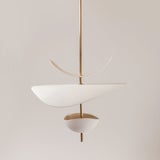
About the Seller
5.0
Recognized Seller
These prestigious sellers are industry leaders and represent the highest echelon for item quality and design.
Diamond Seller
Premium sellers with a 4.7+ rating and 24-hour response times
Established in 2015
1stDibs seller since 2015
4,975 sales on 1stDibs
Typical response time: <1 hour
- ShippingRetrieving quote...Shipping from: Paris, France
- Return Policy
Authenticity Guarantee
In the unlikely event there’s an issue with an item’s authenticity, contact us within 1 year for a full refund. DetailsMoney-Back Guarantee
If your item is not as described, is damaged in transit, or does not arrive, contact us within 7 days for a full refund. Details24-Hour Cancellation
You have a 24-hour grace period in which to reconsider your purchase, with no questions asked.Vetted Professional Sellers
Our world-class sellers must adhere to strict standards for service and quality, maintaining the integrity of our listings.Price-Match Guarantee
If you find that a seller listed the same item for a lower price elsewhere, we’ll match it.Trusted Global Delivery
Our best-in-class carrier network provides specialized shipping options worldwide, including custom delivery.More From This Seller
View AllFragment Of A Bas Relief Sculpture by Mylene Niedzialkowski
Located in Geneve, CH
Fragment Of A Bas Relief Sculpture by Mylene Niedzialkowski
One Of A Kind
Dimensions: L 40 x H 50 cm.
Materials: Sandstone, enamel and steel.
Fragment of bas-relief framed in an Am...
Category
2010s French Modern Wall-mounted Sculptures
Materials
Sandstone, Enamel, Steel
Stone Mural by Olivia Cognet
By Olivia Cognet
Located in Geneve, CH
Stone Mural by Olivia Cognet
Dimensions: D 5 x W 330 x H 260 cm
Materials: Stone Base, Glazed Deep Green.
Each of Olivia’s handmade creations is a unique work of art, the snapshot...
Category
2010s French Post-Modern Ceramics
Materials
Stone
$148,154 / item
Mini Mural by Olivia Cognet
By Olivia Cognet
Located in Geneve, CH
Mini Mural by Olivia Cognet
Dimensions: D 5 x W 26 x H 32 cm
Materials: Travertine.
Each of Olivia’s handmade creations is a unique work of art, the snapshot of a precious moment ...
Category
2010s French Post-Modern Ceramics
Materials
Stone
$3,745 / item
At 18, I Started Seeing The World Differently Sculpture by Carri
Located in Geneve, CH
At 18, I Started Seeing The World Differently Sculpture by Carri
Dimensions: W 40 x D 5 x H 50 cm
Materials: Yellow Cantera.
B 1995 Fernanda Carri ́s intimate practice spans paintin...
Category
2010s Mexican Post-Modern Figurative Sculptures
Materials
Stone
Fragment Of A Bas Relief Sculpture by Mylene Niedzialkowski
Located in Geneve, CH
Fragment Of A Bas Relief Sculpture by Mylene Niedzialkowski
One Of A Kind
Dimensions: L 40 x H 50 cm.
Materials: Sandstone, enamel and steel.
Fragment of bas-relief framed in an Am...
Category
2010s French Modern Wall-mounted Sculptures
Materials
Sandstone, Enamel, Steel
Mini Mural by Olivia Cognet
By Olivia Cognet
Located in Geneve, CH
Mini Mural by Olivia Cognet
Dimensions: D 5 x W 28 x H 32 cm
Materials: Stone.
Each of Olivia’s handmade creations is a unique work of art, the snapshot of a precious moment captu...
Category
2010s French Post-Modern Ceramics
Materials
Stone
$3,745 / item
You May Also Like
Italian Post-War Mosaic Wall Plaque
By Salvador Teran
Located in Queens, NY
Italian Post-War Design rectangular mosaic wall plaque with an abstract design. (att: SALVADOR TERAN)
Category
20th Century Post-Modern Wall-mounted Sculptures
Materials
Stone
Enzo Gallo Monumental Marble Stone Mosaic Wall Sculpture
By Enzo Gallo
Located in Miami, FL
Enzo Gallo Monumental Marble Stone Mosaic Wall Sculpture
Offered for sale is a monumental and wonderful mosaic stone wall sculpture by the Italian-American artist Enzo Gallo (1927-1...
Category
Late 20th Century American Wall-mounted Sculptures
Materials
Stone, Marble
$6,500 Sale Price
23% Off
Post Modern Celestino Piatti Ceramic Art Tiles in Picasso Style
Located in North Hollywood, CA
Set of three, fire, wind, earth, original post modern ceramic tiles by Celestino Piatti.
Celestino Piatti (1922-2007) was a Swiss graphic artist designer, painter and book illustrato...
Category
Late 20th Century Swiss Post-Modern Contemporary Art
Materials
Ceramic
Artistic Mosaic Handmade Glass and Marble Mosaic Customizable
By sicis
Located in London, GB
Making Artistic Mosaic, design of unparalleled beauty, inventing ' tromp l'oeil' thanks to the endless colors of the glass mosaic collections, all this allowed us to produce and divu...
Category
21st Century and Contemporary Italian Modern Contemporary Art
Materials
Marble
Brutalist Picasso Mosaic Style Wall Art
By (after) Pablo Picasso
Located in Las Vegas, NV
Unique art piece after Pablo Picasso, Woman With a Large Hat.
Large ceramic tile, carved and painted to look like a mosaic mounted in a brutalis...
Category
Mid-20th Century Decorative Art
Materials
Iron
Georges Braque, Composition, L'édition de tête (after)
By Georges Braque
Located in Southampton, NY
Lithograph on vélin de Lana paper. Inscription: Unsigned and unnumbered, as issued. Good condition. Notes: From the folio, tête edition, Consacré a Georges Braque, Derniers messages,...
Category
1960s Modern Abstract Prints
Materials
Lithograph
Read More
Galerie Philia Unveils Limited-Edition Designs at Giampiero Tagliaferri’s New L.A. Studio
For the exhibition “Materia Perpetua,” the gallery asked an international group of makers — including Tagliaferri — to explore the possibilities of a surprisingly versatile material: onyx.
Galerie Philia Doesn’t Just Discover Fresh Design Talent — It Grows It
With an impressive slate of international exhibitions, the Geneva-based gallery raises the profiles of emerging designers.
